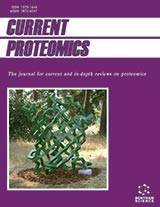Abstract
Multiple sequence alignments (MSAs) are currently one of the most powerful procedure in bioinformatics in order to provide additional information useful to other understanding techniques such as biological function analyses, structure predictions or next-generation sequencing. Nevertheless, current MSA methodologies are providing quite different alignments for the same set of sequences depending on some particular biological features of these sequences. For this reason, the selection of a suitable tool for aligning a specific set of sequences is an important task which has not been totally solved yet. In this work, we propose a hierarchical algorithm of several binary classifiers based on support vector machines (SVMs) to predict "a priori" the MSA tool which will provide the most accurate alignment. Firstly, a set of heterogeneous biological features related to each set of sequences are retrieved from well-known databases. Subsequently, those most significant features according to each specific aligner are included in this particular classifier. Finally, the SVM classifiers are joined to decide the most suitable method according to the quality of each classification. This procedure was assessed by the benchmark BAliBASE v3.0 and compared against other similar tools, namely AlexSys and PAcAlCI.
Keywords: Feature extraction, feature selection, machine learning, multiple sequence alignments (MSAs), support vector machine (SVM).
Graphical Abstract
Current Bioinformatics
Title:A Hierarchical Classification for the Selection of the Most Suitable Multiple Sequence Alignment Methodology
Volume: 10 Issue: 2
Author(s): Francisco M. Ortuño, Hector Pomares, Olga Valenzuela, Carolina Torres and Ignacio Rojas
Affiliation:
Keywords: Feature extraction, feature selection, machine learning, multiple sequence alignments (MSAs), support vector machine (SVM).
Abstract: Multiple sequence alignments (MSAs) are currently one of the most powerful procedure in bioinformatics in order to provide additional information useful to other understanding techniques such as biological function analyses, structure predictions or next-generation sequencing. Nevertheless, current MSA methodologies are providing quite different alignments for the same set of sequences depending on some particular biological features of these sequences. For this reason, the selection of a suitable tool for aligning a specific set of sequences is an important task which has not been totally solved yet. In this work, we propose a hierarchical algorithm of several binary classifiers based on support vector machines (SVMs) to predict "a priori" the MSA tool which will provide the most accurate alignment. Firstly, a set of heterogeneous biological features related to each set of sequences are retrieved from well-known databases. Subsequently, those most significant features according to each specific aligner are included in this particular classifier. Finally, the SVM classifiers are joined to decide the most suitable method according to the quality of each classification. This procedure was assessed by the benchmark BAliBASE v3.0 and compared against other similar tools, namely AlexSys and PAcAlCI.
Export Options
About this article
Cite this article as:
Ortuño M. Francisco, Pomares Hector, Valenzuela Olga, Torres Carolina and Rojas Ignacio, A Hierarchical Classification for the Selection of the Most Suitable Multiple Sequence Alignment Methodology, Current Bioinformatics 2015; 10 (2) . https://dx.doi.org/10.2174/157489361002150518145112
| DOI https://dx.doi.org/10.2174/157489361002150518145112 |
Print ISSN 1574-8936 |
| Publisher Name Bentham Science Publisher |
Online ISSN 2212-392X |
 18
18 2
2
- Author Guidelines
- Bentham Author Support Services (BASS)
- Graphical Abstracts
- Fabricating and Stating False Information
- Research Misconduct
- Post Publication Discussions and Corrections
- Publishing Ethics and Rectitude
- Increase Visibility of Your Article
- Archiving Policies
- Peer Review Workflow
- Order Your Article Before Print
- Promote Your Article
- Manuscript Transfer Facility
- Editorial Policies
- Allegations from Whistleblowers

















.jpeg)








